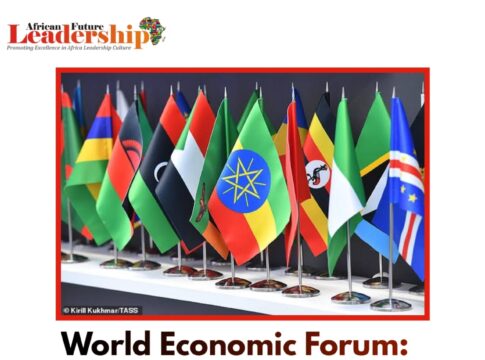World Economic Forum and AFCTA report published in Davos on Wednesday provides global companies and investors with an opportunity to understand the key trends, opportunities and strategies for successfully investing in Africa and generating high returns.”
These four sectors are expected to see a sharp increase in production and trade in these four sectors in which AFCFTA operates.
Pharmaceuticals
The pharmaceutical industry in Africa is expected to grow rapidly due to four key variables that have been highlighted by the UN Industrial Development Organization.
These are rising costs, wider availability, a developing commercial environment, and a rise in genericisation.
About 40% of the continent’s disease load is brought on by HIV/Aids, TB, malaria, diarrhoea, and respiratory illnesses.
Medicine for these ailments comes in the form of pills and liquids such as gels that are simple to manufacture compared to injectables.
According to the report, around R315 billion worth of packaged pharmaceuticals were made in Africa each year.
Sixty-one percent of these pharmaceuticals are imported, while 36% is locally manufactured but not traded.
Only 3% of the demand is satisfied by trade within Africa.
Despite the possibility of indigenous manufacturing, the lack of intra-African trade has resulted in a heavy dependency on imports seven times greater than India.
Under AFCFTA, there are opportunities for private players in the pharmaceutical industry.
“These opportunities are growing thanks to the mitigation of regulatory challenges and the acceleration of new manufacturing. Wider opportunities are also arising within the pharmaceutical industry for products that can be produced locally,” the report said.
Agriculture and agro-processing
According to World Bank figures, Africa had 40% of arable land. However, it has been hard to harness this due to issues such as war and climate change.
As things stand, R857 billion worth of agro products are imported into the continent annually.
It could get worse in 2030, and the report puts the estimates an increase of 574% if import tariffs remain in place, which is the opposite of what AFCFTA promotes.
Africa’s potential was huge, the report said, identifying the fisheries and meat processing sectors.
The majority of Africa’s meat and fish needs are met locally, with only about 13% of imports.
With rising populations, there is an increase in demand. But since the sectors are fragmented across the continent, there is a need to upscale production and focus on value addition with sausages and canned meats.
Ghana has been identified as a model country in the way it operates its cocoa industry.
“Ghana is an example of a country that has taken steps to boost agro-processing by attracting foreign investment and investing in infrastructure for preserving, storing, and transporting harvest yields.
“Ghana intends to process more of its cocoa domestically rather than exporting raw cocoa beans so that it can reduce dependence on raw material exports and shift its status and strengths towards the top of the value chain – becoming a top trader of processed goods,” the report said.
One of the major benefits of AFCFTA is using regional differences to develop food value chains.
Coca-Cola is one company that has done well in Africa because of numerous “mutual goals” with African nations.
There is potential for more because under AFCFTA “the company [will] further develop sourcing and production as well as packaging within African markets”.
AFCFTA could help drive costs down, which will give more countries an equal chance to be suppliers for Coca-Cola or any other international food and beverage processing brands.
Automotive industry
According to the report, the automotive industry in Africa was projected to grow by 40% in 2027 with a value of about R735 billion.
The report estimated “there is an average annual demand for 2.4 million motor cars and 300 000 commercial vehicles” in Africa largely because of factors such as rapid urbanization, which signaled a growing middle class.
For now, that market is satisfied by used car imports, mostly from Asia. However, local production can be the solution to imports.
Already, countries such as Algeria, Egypt, Morocco, and South Africa export about 56% of their automobile production outside Africa.
“With domestic production already growing, there is a strong opportunity to apply domestic production to local demand,” the report said.
South Africa dominates 80% of the African automobile export market.
The report also noted for example, Volkswagen has set up plants in South Africa, Morocco, Tunisia, Ghana, Kenya, and Egypt.
Transport and logistics
The report stated the “majority of intra-African exports are transported over land, 60% of automotive exports, 56% of pharmaceutical exports and 60% of agro-processing product exports”.
AFCFTA estimated maritime trade would jump from 58 million to 132 million tons by 2030. This growth can only happen if the infrastructure for air and rail transportation is continuously being developed.
Already China, through its Belt and Road Initiative, has identified Africa’s potential in a “win-win” basis for both markets.
The report said by 2030, it was anticipated AFCFTA would have increased intra-African freight demand by 28%, necessitating the use of about two million trucks, 100 000 rail wagons, 250 airplanes, and more than 100 vessels.




